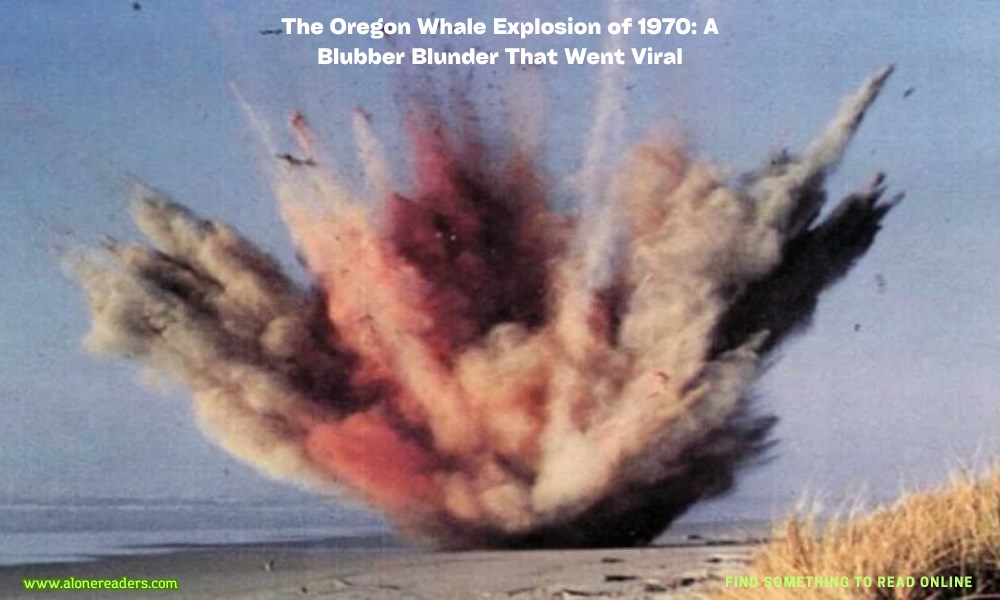
On November 12, 1970, the small town of Florence, Oregon, became the backdrop for one of the most bizarre and unforgettable events in modern history. The incident involved a 45-foot, eight-ton sperm whale that had washed ashore on the state's coast. Decomposing rapidly and proving to be a public health hazard, the authorities faced the daunting task of disposing of the massive marine mammal. Their solution? Dynamite. The resulting explosion, intended to obliterate the whale and scatter its remnants towards the ocean, instead led to an outcome as dramatic as it was disastrous. This event not only caused physical damage but also left an indelible mark on pop culture.
The problem began when the whale, already dead upon discovery, started decomposing on the beach. At the time, the responsibility for Oregon's beaches fell to the Oregon Highway Division, now known as the Oregon Department of Transportation, which had to quickly devise a plan to remove the rotting behemoth. After consulting with various experts, it was decided that dynamite would be used to disintegrate the whale, with the expectation that the smaller pieces would be more manageable for clean-up crews and scavengers alike.
The plan was set into motion with the use of half a ton of dynamite. The idea was to blast the whale into smaller, more manageable pieces that would then be consumed by birds and other animals. A crowd of spectators gathered, drawn by the unusual spectacle of a whale demolition. Local news stations captured the event, with the footage eventually becoming one of the first viral videos in media history.
However, the execution did not go as planned. Instead of disintegrating into small pieces, the whale exploded with such force that large chunks of blubber were flung hundreds of feet away. Some pieces were so large and propelled with such velocity that they caused significant damage. The most dramatic of these was a several-hundred-pound piece of whale blubber that flew through the air and crushed a parked car a quarter of a mile away. Fortunately, no humans were injured, but the event quickly turned from a controlled disposal effort into a scene of chaos.
The aftermath was as sticky as it was smelly. Huge chunks of whale meat littered the beach and the surrounding area, contradicting the initial intent to clean the site. The cleanup operation that followed was massive and messy, involving numerous state agencies and volunteers. The smell of decayed whale hung over the area for weeks, a lingering reminder of the explosive blunder.
This event did not just have local ramifications but also captured the national and international imagination. The absurdity of using dynamite to dispose of a whale, the spectacular failure of the plan, and the dramatic footage of flying blubber that followed all contributed to the story's allure. The original video footage taken by local news reporter Paul Linnman went viral, first on television and later on the internet, becoming a classic example of how not to deal with a beached whale.
The exploding whale story has since been referenced in popular culture, including films, books, and television shows. It serves as a humorous and cautionary tale about the unpredictable nature of handling large-scale problems with potentially explosive solutions. Educational and environmental groups have also used it as a case study in how not to manage marine mammal strandings.
The incident remains a lesson on the challenges and unpredictabilities of dealing with nature. It highlights the importance of seeking expert advice and considering the environmental impact of our actions. The exploding whale of Florence, Oregon, may be remembered for its dramatic and humorous aspects, but it also serves as a poignant reminder of our responsibilities in managing and interacting with the natural world.
In retrospect, the exploding whale incident stands out as a peculiar chapter in Oregon's history. It underscores a moment in time when human intervention in natural processes went spectacularly awry, reminding us of the limits of control over nature and the unforeseen consequences that can arise from well-intentioned actions. This story, though rooted in the specifics of a local event, continues to resonate globally, illustrating the enduring appeal of unusual stories and the lessons they can teach us.